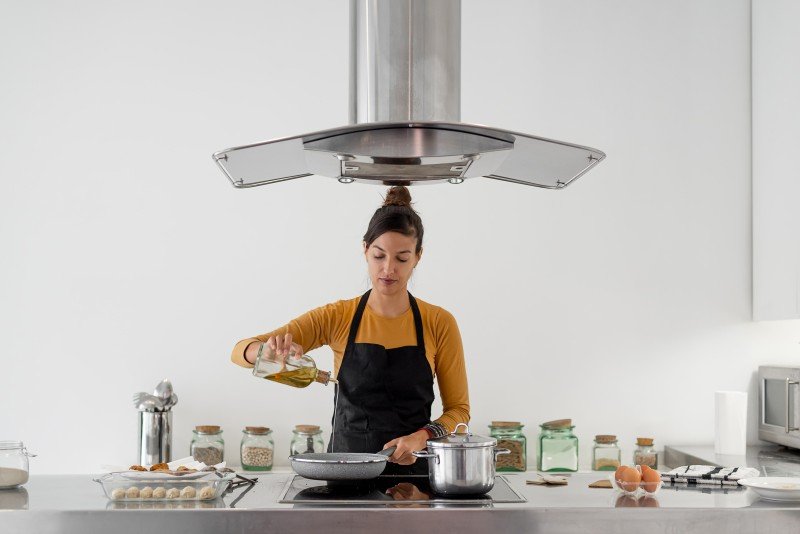Understanding Ovens and Hobs: A Comprehensive Guide
When it concerns cooking home appliances, ovens and hobs are amongst the most important tools found in contemporary kitchen areas. They play critical functions in meal preparation, transforming raw components into tasty meals. Comprehending the differences in between different kinds of ovens and hobs and how to choose the ideal one can make a significant difference in cooking efficiency and food quality.
This article explores ovens and hobs in detail, offering insights into their types, features, benefits, and typical FAQs. Whether you are an experienced chef or an amateur cook, this details will assist you make notified decisions for your culinary needs.
Kinds of Ovens
Ovens come in numerous types, each developed for specific cooking techniques and designs. Here is a detailed take a look at the most typical types of ovens:
| Type of Oven | Description | Best For |
|---|---|---|
| Traditional Oven | Utilizes heating components located at the top and bottom for even cooking. | Baking, roasting, and basic cooking |
| Convection Oven | Functions a fan that distributes hot air for fast and even cooking. | Baking pastries and cookies, roasting meats |
| Steam Oven | Utilizes steam to prepare food, protecting moisture and nutrients. | Veggies and fish |
| Microwave Oven | Quickly cooks food using microwave radiation. | Reheating and quick meals |
| Wall Oven | Built straight into the wall for space-saving cooking options. | Small kitchen areas and contemporary designs |
| Skill Level | Offers numerous cooking modes including baking, broiling, and toasting. | Flexible cooking needs |
Kinds of Hobs
Hobs, also referred to as cooktops, been available in numerous types based on their fuel source and design. Understanding these alternatives can assist in discovering the right suitable for your kitchen setup:
| Type of Hob | Description | Best For |
|---|---|---|
| Gas Hob | Utilizes gas flames for cooking, supplying instant heat control. | Standard cooking techniques |
| Electric Hob | Uses electric coils or induction aspects to heat pots and pans. | Even heat circulation |
| Induction Hob | Employs electro-magnetic energy to straight heat up pots, supplying quick and efficient cooking. | Energy-efficient cooking |
| Strong Plate Hob | A kind of electric hob with solid plates that takes time to warm up however retains heat well. | Slow cooking |
| Ceramic Hob | Features a glass-ceramic surface enabling simple cleaning, with electric heating elements below. | Visual appeal |
Elements to Consider When Choosing an Oven and Hob
Selecting the ideal oven and hob mix needs careful consideration of numerous aspects. Below is a list of vital elements to keep in mind:
Cooking Style
- Are you an everyday cook or a periodic baker?
- Do you choose steaming or frying?
Kitchen Size
- What space is offered in your kitchen for the home appliances?
- Will you need built-in or freestanding designs?
Fuel Source
- Do you have access to gas, or would you choose electric?
- Are you thinking about induction cooking technology?
Budget plan
- What is your spending plan for acquiring an oven and hob?
- Are you thinking about a high-end design or a more cost effective alternative?
Energy Efficiency
- Are you wanting to reduce your energy usage?
- Do you prefer devices that include high-efficiency scores?
Benefits of Ovens and Hobs
Both ovens and hobs bring unique advantages to the kitchen. Here's a summary of some advantages:
Ovens:
- Versatility: Able to handle a large range of cooking methods from baking to roasting and broiling.
- Consistent Results: Even heat circulation supplies dependable cooking outcomes.
- Big Capacity: Ideal for big meals and batch cooking.
Hobs:
- Control: Gas hobs use instant heat changes, useful for accurate cooking.
- Performance: Induction hobs are known for their quicker heat-up times and energy efficiency.
- Independent Cooking: Multiple hobs enable for cooking numerous dishes all at once.
Picking the best ovens and hobs is crucial for anybody looking to improve their cooking abilities and kitchen performance. By understanding in the know of each home appliance, together with their benefits and features, consumers can make educated choices that cater to their culinary routines and preferences.
As kitchen areas progress, so do the technologies surrounding cooking appliances. Investing in the ideal combination of an oven and hob can result in much better cooking experiences, greater food quality, and even pleasurable time spent in the kitchen.
Frequently Asked Questions (FAQs)
What is the difference in between convection and standard ovens?
- A stove uses a fan to circulate air for even cooking, while a conventional oven relies only on the top and bottom heating aspects.
How do induction hobs work?
- Induction hobs utilize electro-magnetic fields to directly heat up pots and pans made from magnetic products, resulting in faster cooking times and more energy effectiveness.
Are gas hobs safer than electric hobs?
- Security depends upon usage and setup. Gas hobs require correct ventilation and can provide a fire danger, while electric hobs may posture risks of burns due to their hot surface areas.
Can I bake in a steam oven?
- Yes, a steam oven can be utilized for baking, frequently leading to moister and fluffier baked goods, especially breads and pastries.
What should I look for in a built-in oven?
- Search for features like capability, cooking modes, energy effectiveness scores, and ease of cleansing.
By considering the information and guides provided in this article, readers can easily browse the world of ovens and hobs, ensuring that they select the very best devices to match their culinary requirements.

